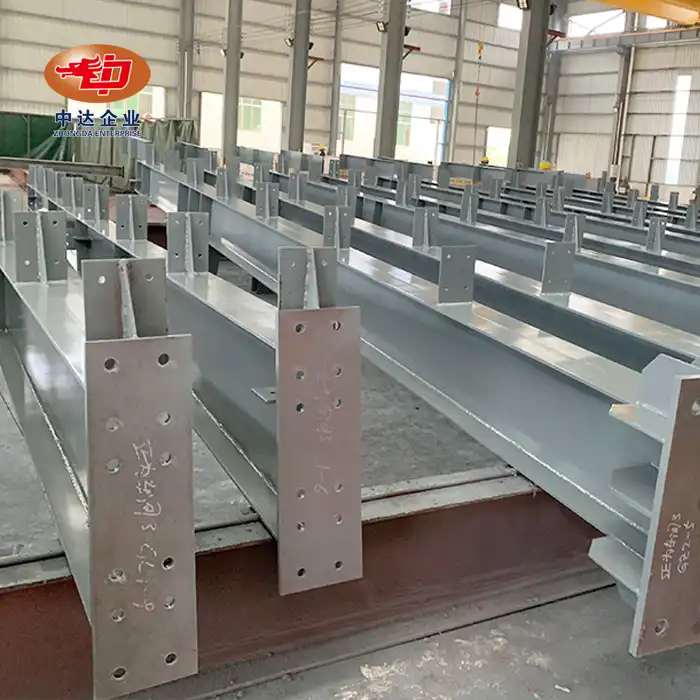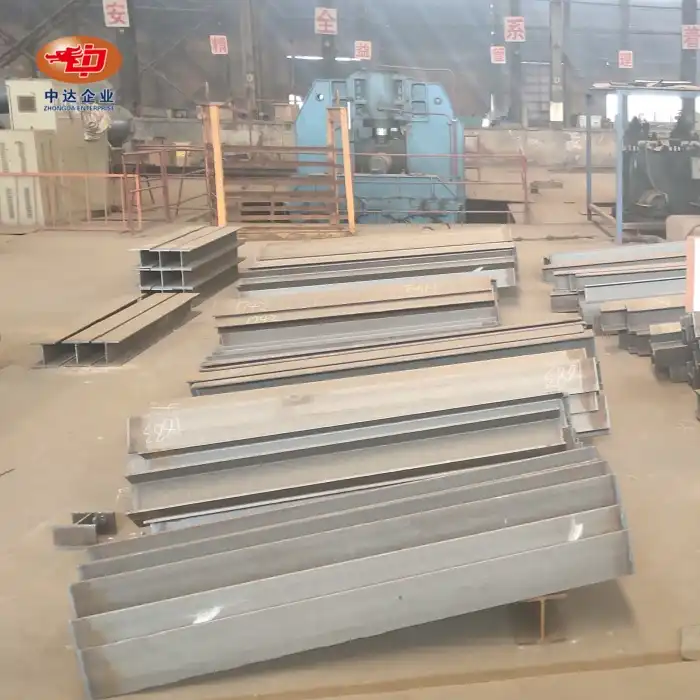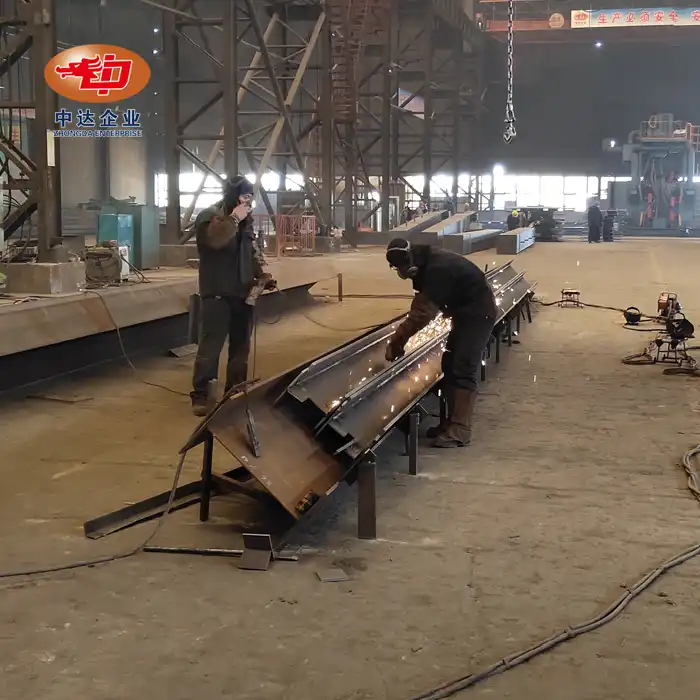The Composition and Properties of Cross-Section Column Materials
Chemical Composition of Q355B Steel
Q355B steel, the primary material used in cross-section columns, is a low-alloy high-strength structural steel. Its chemical composition typically includes carbon (0.16-0.20%), silicon (0.15-0.50%), manganese (1.0-1.6%), phosphorus (≤0.035%), sulfur (≤0.035%), and trace amounts of other elements like nickel, chromium, and copper. This carefully balanced composition contributes to the steel's excellent mechanical properties and weldability.
Mechanical Properties of Q355B Steel
The Q355B steel used in cross-section columns boasts impressive mechanical properties. It has a minimum yield strength of 355 MPa and a tensile strength ranging from 490 to 630 MPa. The elongation at break is typically around 20%, indicating good ductility. These properties make Q355B steel ideal for structural applications requiring high strength-to-weight ratios and excellent formability.

Advantages of Q355B Steel in Cross-Section Columns
The choice of Q355B steel for cross-section columns offers several advantages. Its high strength allows for thinner sections, reducing overall weight without compromising structural integrity. The material's good weldability facilitates efficient fabrication processes, while its corrosion resistance enhances the longevity of the columns. Furthermore, Q355B steel's performance in low-temperature environments makes it suitable for a wide range of climatic conditions, expanding its applicability in various construction projects worldwide.
Manufacturing Processes for Cross-Section Columns
Welding Techniques for Cross-Section Columns
The manufacturing of cross-section columns involves advanced welding techniques to ensure structural integrity and performance. Submerged arc welding (SAW) is often employed for its ability to produce high-quality, deep-penetration welds in thick materials. This process is particularly suitable for the long, continuous welds required in column fabrication. Additionally, flux-cored arc welding (FCAW) may be used for its versatility and high deposition rates, especially in out-of-position welding situations. These welding methods are carefully controlled to minimize distortion and ensure optimal joint strength.
Precision Cutting and Forming Processes
The fabrication of cross-section columns begins with precision cutting of steel plates. Advanced CNC plasma cutting systems are utilized to achieve high accuracy and smooth cut edges. For the honeycomb beam hole designs, which reduce self-weight by up to 20%, specialized cutting techniques such as laser cutting or high-definition plasma cutting are employed. The forming process involves sophisticated bending and rolling equipment to shape the steel plates into the required double H-shaped profile. These processes are optimized to maintain tight tolerances and ensure consistent quality across production runs.
Quality Control and Testing Procedures
Rigorous quality control measures are implemented throughout the manufacturing process of cross-section columns. Non-destructive testing methods, including ultrasonic testing and magnetic particle inspection, are used to detect any internal or surface defects in the welded joints. Dimensional checks are performed at various stages to ensure compliance with design specifications. Load testing may be conducted on sample columns to verify their structural performance. These comprehensive quality assurance procedures ensure that the finished cross-section columns meet or exceed the EN 10025-4 standard, guaranteeing global quality benchmarks.

Applications and Performance of Cross-Section Columns in Construction
Structural Applications in High-Rise Buildings
Cross-section columns excel in high-rise construction due to their enhanced lateral stiffness and load-bearing capacity. Their unique double H-shaped profile provides superior resistance to bending and torsional forces, making them ideal for the core structures of skyscrapers. The columns' ability to support heavy loads while maintaining a relatively slim profile allows for more efficient use of floor space. In projects like the Shenyang Dongta Cross-Hunhe River Bridge, these columns demonstrated their capability to handle massive loads of up to 18,000 tons, showcasing their suitability for large-scale infrastructure projects.
Industrial and Heavy Equipment Support Structures
The versatility of cross-section columns extends to industrial applications, where they serve as robust support structures for heavy machinery and equipment. Their customizable design allows for integration of utilities and services within the column structure, optimizing space utilization in industrial facilities. The columns' performance in demanding environments, such as Australian mining crushing stations, highlights their durability and reliability in harsh conditions. The ability to withstand dynamic loads and vibrations makes these columns an excellent choice for supporting industrial equipment in sectors ranging from manufacturing to energy production.
Performance in Extreme Environmental Conditions
Cross-section columns manufactured by Zhongda Steel are engineered to perform exceptionally well in extreme environmental conditions. The use of Q355B steel, combined with advanced anti-corrosion technologies like -60°C Weathering Steel, ensures durability in harsh climates. This makes these columns suitable for projects in diverse geographical locations, from arctic regions to tropical environments. The columns' resistance to temperature fluctuations, humidity, and corrosive elements significantly extends their service life, reducing long-term maintenance costs and enhancing the overall sustainability of structures they support.
Conclusion
Cross-section columns, primarily constructed from Q355B low-alloy steel, represent a pinnacle of structural engineering. Their unique double H-shaped profile, combined with advanced manufacturing techniques, results in a product that offers superior strength, durability, and versatility. From towering skyscrapers to heavy industrial applications, these columns provide the backbone for modern construction projects worldwide. As the demand for efficient, high-performance structural solutions continues to grow, cross-section columns stand ready to meet the challenges of tomorrow's architectural and engineering feats.
Contact Us
For cutting-edge cross-section column solutions tailored to your project needs, turn to Zhongda Steel. Our commitment to innovation, quality, and customer satisfaction ensures that you receive the best in structural steel technology. Contact us at Ava@zd-steels.com to explore how our cross-section columns can elevate your next construction project to new heights of excellence.














